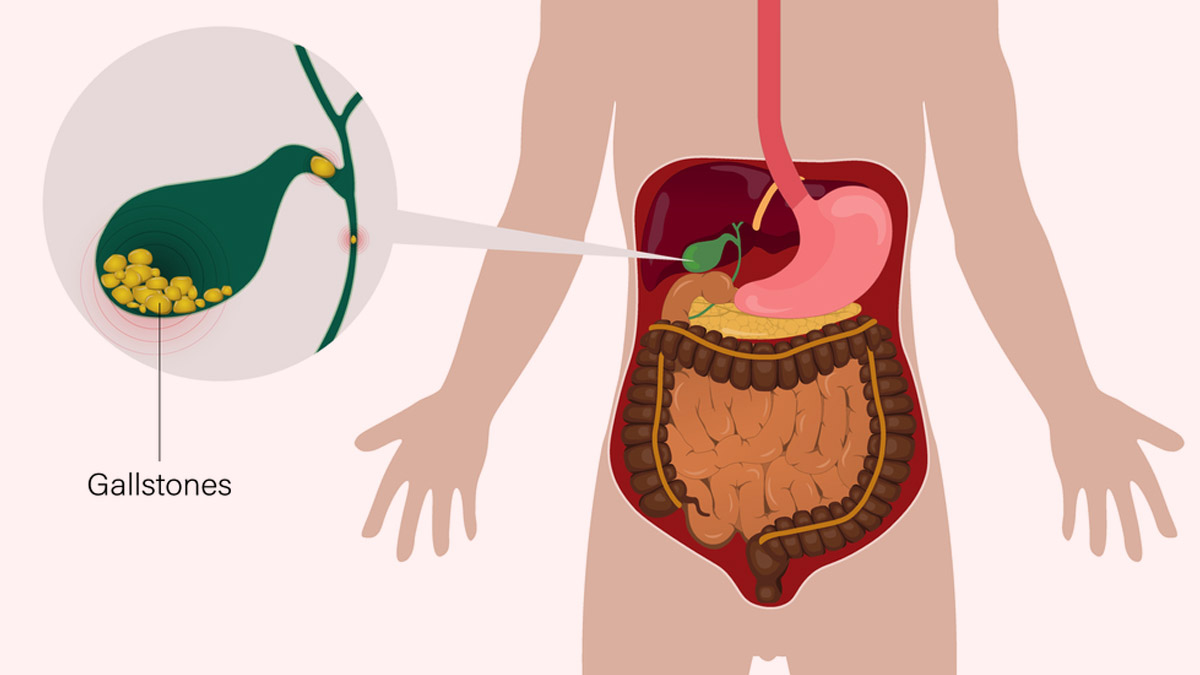
Gallbladder stones, or gallstones, are hardened deposits of digestive fluids formed in the gallbladder. The gallbladder is a small organ located beneath the liver, which stores bile—a digestive fluid produced by the liver. Gallstones can vary in shape and size, and can be either solitary or multiple. They are most commonly composed of cholesterol, calcium, and bile salts.
Table of Content:-
To understand the symptoms, causes, and treatment of gallbladder stones, OnlyMyHealth interacted with Dr Roohi Pirzada, MBBS, Consultant Physician, Mumbai.
Symptoms of Gallbladder Stones

Gallbladder stones may not always cause symptoms. When they do, the signs can range from mild discomfort to severe pain, depending on the size and location of the stones. Some common symptoms include:
Dr Pirzada explains, "Symptoms may be right upper abdominal cramps, pain which may radiate to the back, nausea, vomiting, and sometimes extremely severe, unbearable pain. This may be accompanied by icterus, that is yellow discoloration of the sclera and skin, fever, and intense pain, which may require admission."
Also read: From Abdominal Pain To Fever: Early Warning Signs Of Gallbladder Stone
Causes of Gallbladder Stones

“Gallstones form when the substances that make up biles, such as cholesterol, calcium, and bilirubin, become imbalanced,” Dr Pirzada explained. Several factors as per Dr Pirzada, can contribute to this imbalance, including:
Excess Cholesterol in Bile: The liver may produce more cholesterol than the bile can dissolve. The excess cholesterol forms crystals, which eventually turn into stones.
Inadequate Bile Salts: Bile salts help to break down fat. If the liver doesn't produce enough bile salts, the cholesterol may solidify into stones.
Gallbladder Dysfunction: If the gallbladder doesn't empty properly, bile may become overly concentrated, leading to the formation of stones.
A study from Harvard Medical School emphasised the role of diet, revealing that individuals who consumed a high-fat, high-cholesterol diet had an increased risk of developing gallstones, while those on a low-fat, high-fibre diet experienced a reduced risk.
Treatment for Gallbladder Stones

The treatment for gallstones varies depending on the severity of the symptoms and the size of the stones. In some cases, lifestyle changes may be enough to manage the condition. For others, surgery or medication may be necessary.
Lifestyle Changes: According to Dr Pirzada, "Treatment depends on the scale of cholelithiasis and may need lifestyle changes like a low-fat diet, avoiding alcohol, and weight reduction." A diet low in fats and cholesterol can reduce the likelihood of stones forming or recurring.
Medications: Lipid-lowering medications may be prescribed if cholesterol levels are high. In some cases, doctors may recommend oral dissolution agents such as ursodiol or chenodiol to break down the stones non-surgically. Dr Pirzada notes that "non-surgical treatments like oral dissolution agents may be used to break the stones."
Surgical Treatment: If gallstones cause frequent pain or complications like pancreatitis or infection, surgery may be necessary. The most common surgical procedure is cholecystectomy, in which the entire gallbladder is removed. This can be done through traditional open surgery or minimally invasive laparoscopic surgery.
Dr Pirzada noted, "Surgery may be needed as per case assessment, where the entire gallbladder is removed surgically to avoid any further life-threatening episodes and attacks of acute pancreatitis and sepsis."
Conclusion
Gallbladder stones can range from being asymptomatic to causing severe, life-threatening conditions. If you experience symptoms like severe abdominal pain, jaundice, or fever, it is important to seek medical attention. Lifestyle changes, medications, and surgery are the primary methods of treatment, depending on the severity of the condition. With proper management, gallstones can be effectively treated, preventing complications and improving quality of life.
Also watch this video
How we keep this article up to date:
We work with experts and keep a close eye on the latest in health and wellness. Whenever there is a new research or helpful information, we update our articles with accurate and useful advice.
Current Version